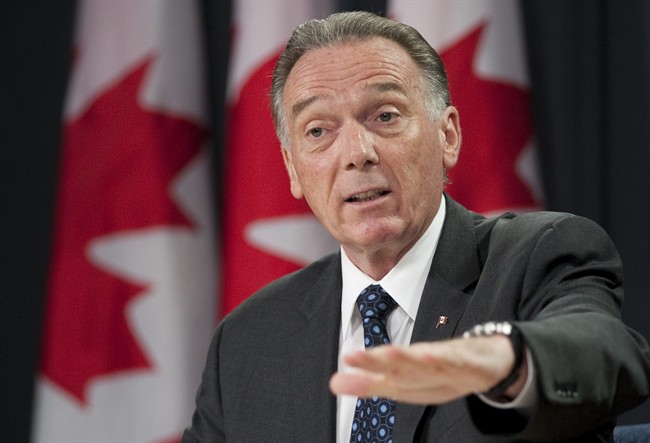OTTAWA – The federal government will expand environmental monitoring of the Alberta oilsands to capture everything from its effect on birds’ eggs to whether people as far away as the Northwest Territories are being exposed to potentially toxic air.

The scientific data will also be used to fight back against international criticism that the expanding, multi-billion-dollar industry is laying waste to the land, said Environment Minister Peter Kent.
“It will provide the facts and the science to defend the product which some abroad are threatening to boycott,” Kent said.
The Canadian government has been fighting a public relations war over the oilsands for years, facing down slick campaigns run by environmental groups and lobbyists in Europe and the U.S.
The issue is top-of-mind in America right now as Washington prepares to decide whether to allow construction of a $7 billion pipeline to transport Canadian crude oil to the U.S. Gulf Coast.
Kent acknowledged that beefed-up monitoring could tip that decision in Canada’s favour, but it is also important for the entire Canadian economy.
“If Canadians want the benefits of billions of dollars invested in state-of-the-art technology, new equipment, the employment and training of workers, we must also take responsibility for protecting the environment,” he said.
Dozens of scientists from both the federal and Alberta governments worked on the plan and Kent said the concept was created in concert with what the province is already doing.
- Posters promoting ‘Steal From Loblaws Day’ are circulating. How did we get here?
- As Canada’s tax deadline nears, what happens if you don’t file your return?
- Video shows Ontario police sharing Trudeau’s location with protester, investigation launched
- Investing tax refunds is low priority for Canadians amid high cost of living: poll
While the federal government has responsibility for handling pollution, the resource itself belongs to Alberta, which has led to jurisdictional squabbles over who is in charge of keeping an eye on the oilsands industry.
While Kent called what he unveiled on Thursday a monitoring “system,” Alberta’s environment minister spoke of “technical documents.”
“These technical reports completed by the federal government add to the work submitted to the province earlier this month by the Alberta Environmental Monitoring Panel,” Environment Minister Rob Renner said in a statement.
“Our goal remains to work with the federal government to develop a state-of-the-art monitoring, evaluation and reporting system.”
There is no formal plan in place on how the two governments will share expanded monitoring, but both sides said there should be no duplication of effort.
The federal plan will cost $50 million a year to ensure industrial development is done in a responsible way, but the industry itself will be cover the costs, Kent said.
The cost will likely fall over the years as the system becomes more efficient.
The expanded system builds upon a plan announced last March to monitor water quality in the region. That plan was announced following a federal panel’s report which said existing efforts to oversee the oilsands needed to be expanded immediately.
Among other improvements, three dozen more monitoring stations for water and air will be added. Air quality measurements will be taken across Alberta, the Northwest Territories, Saskatchewan and Manitoba, to determine how far particles from the Athabasca region travel.
Scientists will also develop and implement systems for monitoring effects on wildlife, collecting bird eggs, frogs and other species to check for chemical contamination or malformations.
The technical challenges for scientists run the gamut from figuring out a baseline of measurements for all the data to how much of the change can be attributed to oilsands production versus natural evolution.
“It’s not to prosecute the industry,” said Kent.
“It is to identify problems and fix them if they are identified.”
Kent said he expected the work to begin as soon as there is a commitment from Alberta, its scientists and industry, though he said some monitoring is already being done.
Environmentalists welcomed the increased monitoring, but criticized the new system as toothless.
“The question is will the federal government actually reduce pollution or only track it better?” said Greenpeace’s Mike Hudema.
Environmental Defence said the impacts of the oilsands are already clear and mitigation needs to go beyond collecting data.
“While we welcome Environment Canada’s release of new monitoring design for tarsands pollution and biodiversity, the plan needs to be complemented with legally binding regulations if we are to see progress on the ground,” said Gillian McEachern of Environmental Defence.
“More data alone will not stop the growing pollution problem. Ottawa already has the legal authority to act.”



Comments